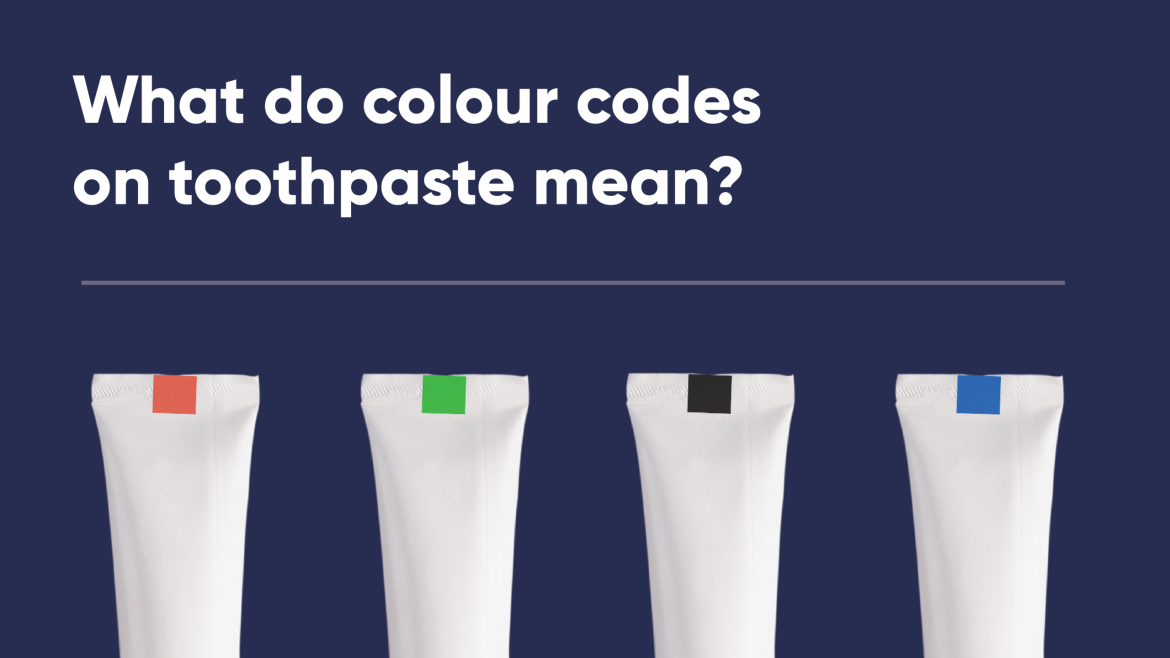If you’ve ever taken a close look at your toothpaste tube, chances are you’ve noticed a small coloured square or rectangular mark at the edge of the tube. For years, these little marks have sparked debates online and in everyday conversations. Some say they tell you whether the toothpaste is made from natural ingredients or chemicals. Others claim the colours indicate safety or quality levels. But how true are these claims? This article sets the record straight and explains the real reason behind those mysterious marks on toothpaste tubes and other packaged products
The Common Colours Found on Toothpaste Tubes
Most toothpaste brands display marks in colours such as green, red, blue, or black. Over time, a widely circulated myth suggested that these colours reflect the ingredient makeup of the toothpaste. According to the claim, green means the toothpaste is all-natural, blue suggests a mix of natural and medicinal ingredients, red indicates a combination of natural and chemical ingredients, and black implies the product is entirely chemical. These colour codes have been repeated so often that many Nigerians now accept them as fact.
The Truth Behind the Colour Coding Myth
However, this belief has no basis in science or product labeling regulations. Toothpaste manufacturers and packaging experts have dismissed the claim as false. The colour of the mark does not reveal anything about the content of the toothpaste. It does not show how organic or synthetic a product is, nor does it give you any hidden information about safety or ingredients.
What the Coloured Marks Actually Represent
The truth is much simpler and less dramatic. The coloured marks are known in the manufacturing world as eye marks or colour marks. They are used during the packaging process to help machines detect the end of a tube or package. These marks tell the automatic cutting or sealing equipment where to trim, fold or seal each unit. It’s a purely mechanical function that ensures precision and speed on the production line.
How Eye Marks Work in Manufacturing
On a high-speed production line, machines rely on visual cues to perform tasks like cutting or sealing. A photoelectric sensor reads the position of the coloured mark as the product moves along the conveyor belt. Once detected, the sensor signals the machine to perform the correct action at the right time. The colour used depends on what will show up best against the background of the packaging. If the packaging is white, black may be used. If the tube is dark, white or light-coloured marks may be chosen.
Do All Products Use Eye Marks the Same Way?
These kinds of marks aren’t limited to toothpaste tubes. You’ll also find them on chocolate bars, biscuit wrappers, detergent sachets, and even some tablet packaging. The same principles apply — they are simply guides for the machines during the packaging process. The marks may appear at the top, bottom, or back of a product, depending on how it is processed and sealed.
Why Consumers Mistake Eye Marks for Ingredient Codes
The confusion likely began with viral messages on social media and messaging platforms. These posts often feature pictures of different tubes with various coloured marks, followed by an explanation that sounds scientific but is completely incorrect. Because the marks are small and mysterious, and because the explanation appears consistent, many people believe it without verifying from a credible source.
How to Actually Check Product Ingredients
If you want to know what’s inside your toothpaste, your best bet is to read the ingredient list printed on the packaging. Reputable brands are required to list all active and inactive ingredients clearly. You can also visit the company’s official website for full product details. Ingredients like fluoride, sorbitol, sodium lauryl sulfate and others are usually listed in plain language or using standard chemical names.
Manufacturer Insights: What Industry Experts Say
Industry experts have confirmed that eye marks are purely technical. A packaging engineer from a multinational consumer goods company stated that the colours are selected based on contrast, not content. Manufacturers use them to avoid errors during fast-paced automated packaging, and nothing more.
Conclusion: Know the Facts Before You Share
While social media can be a powerful tool for information, it is also a hotbed for myths and misinformation. The coloured marks on toothpaste tubes and similar products are not secret codes for ingredients or safety levels. They are practical tools used in packaging. Before believing or forwarding a message that sounds too specific to be random, it’s worth taking a moment to research. In this age of fast-spreading misinformation, facts are more valuable than ever.
